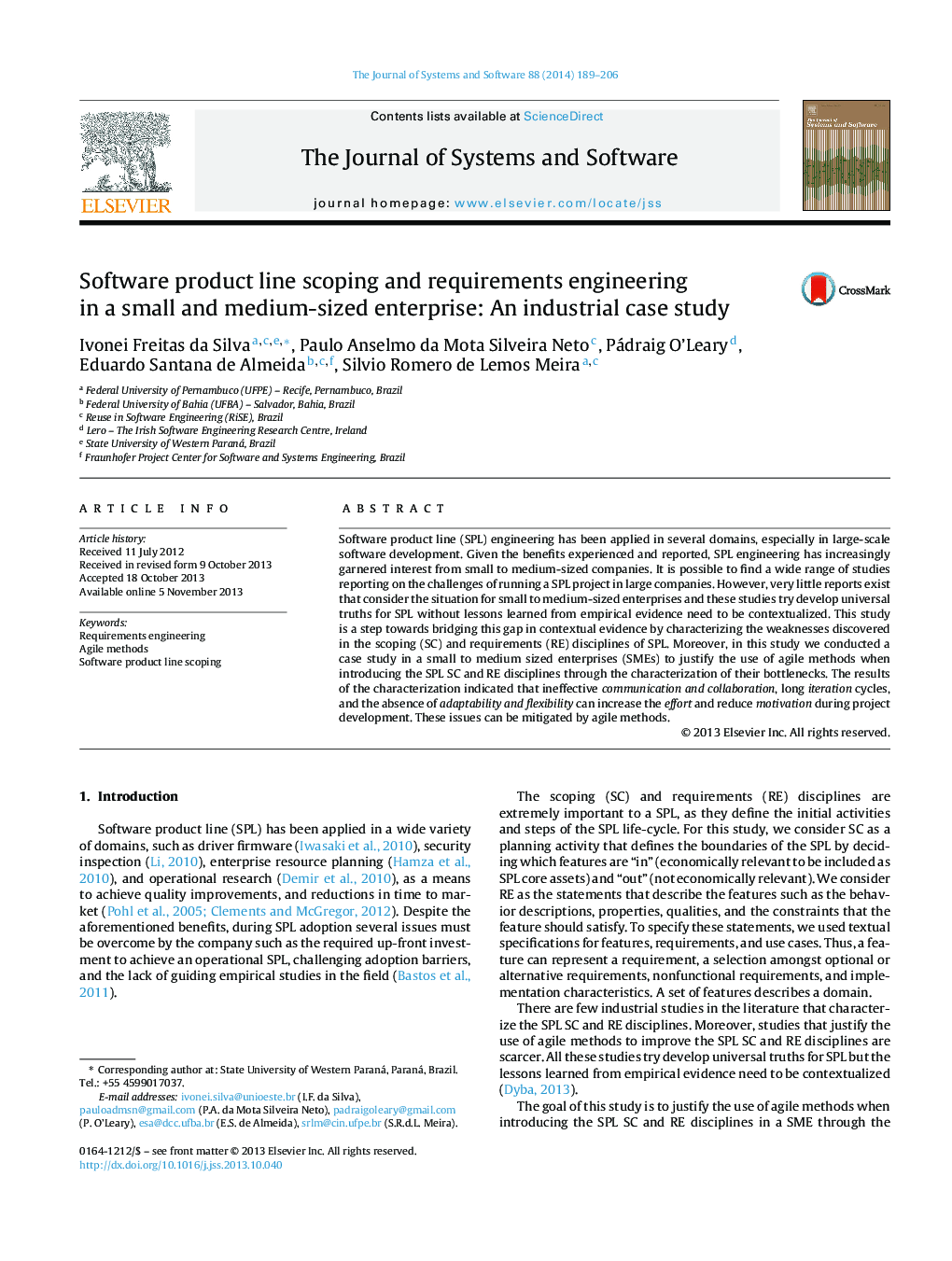| Article ID | Journal | Published Year | Pages | File Type |
|---|---|---|---|---|
| 6885772 | Journal of Systems and Software | 2014 | 18 Pages |
Abstract
Software product line (SPL) engineering has been applied in several domains, especially in large-scale software development. Given the benefits experienced and reported, SPL engineering has increasingly garnered interest from small to medium-sized companies. It is possible to find a wide range of studies reporting on the challenges of running a SPL project in large companies. However, very little reports exist that consider the situation for small to medium-sized enterprises and these studies try develop universal truths for SPL without lessons learned from empirical evidence need to be contextualized. This study is a step towards bridging this gap in contextual evidence by characterizing the weaknesses discovered in the scoping (SC) and requirements (RE) disciplines of SPL. Moreover, in this study we conducted a case study in a small to medium sized enterprises (SMEs) to justify the use of agile methods when introducing the SPL SC and RE disciplines through the characterization of their bottlenecks. The results of the characterization indicated that ineffective communication and collaboration, long iteration cycles, and the absence of adaptability and flexibility can increase the effort and reduce motivation during project development. These issues can be mitigated by agile methods.
Related Topics
Physical Sciences and Engineering
Computer Science
Computer Networks and Communications
Authors
Ivonei Freitas da Silva, Paulo Anselmo da Mota Silveira Neto, Pádraig O'Leary, Eduardo Santana de Almeida, Silvio Romero de Lemos Meira,
